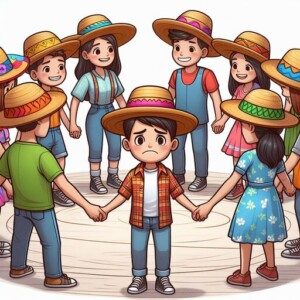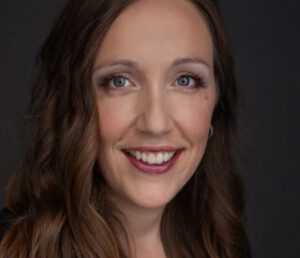If you’re doubting your ASD diagnosis wondering if you’re just a broken person, here’s the autism traits that childhood trauma can’t cause.
Perhaps you’ve read or heard that some characteristics of Autism Spectrum Disorder overlap those of childhood trauma.
However, there are features of autism that even the most miserable childhood environment absolutely cannot cause.
“Autistic traits that do not occur as a result of trauma include special interests, broad sensory sensitivities and difficulty intuitively reading social cues,” begins Dr. Jessica Myszak, licensed psychologist, and director of The Help and Healing Center, whose practice is mostly autism assessment for adults.
There are others, too, but let’s first look at these.
Special Interests

Freepik.com
Many people are “obsessed” with professional basketball, but it’s the Autistic who’ll be able to rattle off every detail of every single game over the past five years.
Childhood trauma will not make an autistic woman so fixated on power strips that she has 10 in her collection that she becomes mesmerized with just by looking at them.
A “bad childhood” won’t make an autistic young adult want to get out of his car every time he spots a culvert and inspect it.
No amount of criticism that I received during my adolescence and teen years for being an oddball could explain why I can spend a huge amount of time on an AI site creating faces and hair reflecting different racial mixes.

Lifelong hyperfixation: racial mixes. This AI-generated child is a mix of white, black and Asian.

This AI-generated child, as well, is a mix of white, black and Asian. Yet the genetics present so differently in each girl!
Autistic people are highly prone to developing hyperfixations on topics ranging from popular – such as a hit TV show or scented candles – to the very strange or esoteric.
Harsh punishments or verbal abuse isn’t going to make someone eventually become enthralled by train signals and want to talk about them all the time.
“Having intense areas of interest is not a trauma response,” says Dr. Myszak.
Sensory Sensitivities – Broad

Freepik.com
A neurotypical person who grew up in a violent household where doors were always slamming and people were always yelling may end up very sensitive to sudden loud sounds and yelling voices – including those in a crowded restaurant where loud music is played.
The smell of smoke, says Dr. Myszak, can trigger overwhelm in an NT person whose childhood abuser was always smoking.
If the abuser often wore too much perfume, the scent of perfume may always be a trigger for that NT individual.
“But it is usually specific things rather than a broad oversensitivity,” says Dr. Myszak, referring to NTs who are overly sensitive to certain stimuli.
Just like the aroma of baking bread or fresh baked apple pie could bring on warm fuzzy memories of the loving grandma who cooked these foods, there are also odors and other stimuli that can bring on internal distress if they’re associated with emotional abuse or other traumatic experiences.
The sensory sensitivities of Autistics may include:
• Intolerance of common fabrics
• Intolerance of mittens or gloves even in frigid cold
• Finding common food textures unbearable
• Ultra-sensitivity to store lighting
• Significant aversion to hearing multiple conversations at once
• Easily distracted by common and soft sounds that either go unnoticed by others or don’t bother others
• Hatred of feeling water on their skin
• Intense hatred of the feel of common items such as paper, cotton or hair on one’s neck
Difficulty with Social Cues

©Lorra Garrick
Just like an autistic adult from the most supportive, loving home will never grow up to intuitively, instinctively read social cues just because they felt loved and validated in childhood – likewise, a neurotypical adult will not struggle with reading social cues just because they were verbally abused or otherwise mistreated by their parents in childhood.
Though NTs can learn to improve their social skills (there’s a ton of books out there for this), correctly reading nonverbal and verbal (e.g., change in pitch of voice) communication is instinctual for the neurotypical.
Trouble with neurotypical social cues is another autism-specific trait, says Dr. Myszak.
Another Autism Trait that Isn’t Caused by a Traumatic Childhood
How can we leave out stimming?
Many NTs stim as a result of anxiety and trauma-based coping mechanisms, says Dr. Myszak.
Situational anxiety can send an NT into Stimland. Look no further than the father’s waiting room on a maternity ward.
There are “socially acceptable” stims that NTs engage in such as repeatedly bouncing a basketball while in conversation, chewing on a pencil or rocking – in a rocking chair.
“While people may fidget or move their body to self-regulate as a response to stress or anxiety, autistic stimming looks different,” says Dr. Myszak.
“Autistic stims are often done for the joy or feel of it, and they can look very different from neurotypical fidgets.”
A stim may come in the form of sensory seeking. This can mean repetitively running one’s fingers along a swath of velvet or gently tearing up paper while doing computer work, watching TV, talking on the phone or just sitting by a window.
It can mean use of all kinds of stimming toys such as objects to twirl or shake, “chewelry” or biting the dickens out of one’s shirt collars.
The Autistic isn’t necessarily distressed, bored or upset while stimming, which can occur all day long. They may simply want some joyful stim time. And often, stimming all the time feels so natural; it feels unnatural not to do it.
“Many high-masking autistic people have stims that they do in private but are uncomfortable doing in front of others — these might include spinning, dancing, vocalizing in certain ways, and moving their face or body in different ways,” explains Dr. Myszak.
Autistic people may spend a large part of their day stimming, whereas NTs may do it for only fractions of time out of an entire day or only during periods of intense emotional duress.
Other Traits Common in Autism Not Caused by Childhood Trauma
The traits below are common in autism, though not every person with Autism Spectrum has these traits.
Odd difficulties with eye contact.
Though a person with PTSD from a rancid childhood may find eye contact challenging at times due to some social anxiety or impaired self-worth, an autistic person may find that eye contact while in conversation causes distraction, disrupting their ability to focus on the conversation.
Instead they end up focusing on how to do eye contact correctly, getting so absorbed in which eye to look at, when to shift to the other eye, when it’s time to break eye contact, the other person’s eyelashes, etc., that they have no idea what was said to them.
Not all Autistics struggle with eye contact, but a miserable upbringing won’t cause eye contact to feel like one is looking into a bright light or that their soul is being invaded, either.
Relentless rehearsing of anticipated conversations.
An autistic person may rehearse, over and over inside their head, countless times, upcoming conversations.
The rehearsals often include fictitious people. Sometimes a script is developed word for word, while in other cases the gist of the script (with slight variations in words with each rehearsal) is honed.
Literal thinking.
Though most autistics won’t actually believe that cats and dogs are falling from the sky when someone says this during a heavy rainstorm, autistic people typically have some degree of literal thinking that’s apparent to others.
This shows up in difficulty telling when they’re being kidded with. It can show up in misinterpreting something they just read or was told.
It could mean trying to understand what a magazine is in a gun when all they could think about is magazines for reading.
Rigid, inflexible thinking.
All people may experience this from time to time, but for Autistics it’s their normal, their typical.
“I’ll call you at 2:00,” to an Autistic, means 2:00 on the dot. At five minutes past, they’re wondering why the call hasn’t come.
A break in routine may cause distress, even a meltdown. Internal distress can be caused by change such as a new location of their workstation on the job, rearrangement of merchandise at the grocery store they always go to, and resistance to taking a new route when driving.
Not “getting” pop culture.
Sure, many NTs don’t subscribe to the latest trends, either.
But the difference in autistic people is that the latter doesn’t understand pop culture.
Pop culture is defined as a set of beliefs, practices, styles, fashions, crazes, fads, etc., that are popular or prevalent at a given point in time.
As a clinically diagnosed Autistic, I don’t “get” pop culture, even though I can explain what it is and give a lecture on it.
Autistic Thinking Is Not Caused by Childhood Trauma
Growing up in a toxic household can really do a number on the mind of a neurotypical as well as an Autistic.
But it won’t impair the NT’s ability to read social cues, cause overthinking of eye contact, often missing sarcasm and figures of speech or lead to any of the other aforementioned challenges.
Many autistic people, though, have experienced mental abuse from caretakers when growing up, along with ridicule by classmates and teachers, plus more aggressive bullying by their peers.
It almost seems to come with being autistic, being that any child who stands out in some peculiar, perplexing way can bring out the worst in those around them.
Many adults who suffered in childhood are also neurotypical, and though this may bring a significant assortment of problems into adulthood, they’d still score low on an autism screening test.
Dr. Jessica Myszak, a psychologist who specializes in autism assessment for both children and adults, is the founder of Autistic Support Network. She sees clients in-person in the Chicago area and over telehealth in 31 states. Learn more about her practice at helpandhealingcenter.com.
 Lorra Garrick has been covering medical and fitness topics for many years, having written thousands of articles for print magazines and websites, including as a ghostwriter. She’s also a former ACE-certified personal trainer. In 2022 she received a diagnosis of Level 1 Autism Spectrum Disorder.
Lorra Garrick has been covering medical and fitness topics for many years, having written thousands of articles for print magazines and websites, including as a ghostwriter. She’s also a former ACE-certified personal trainer. In 2022 she received a diagnosis of Level 1 Autism Spectrum Disorder.
.




























